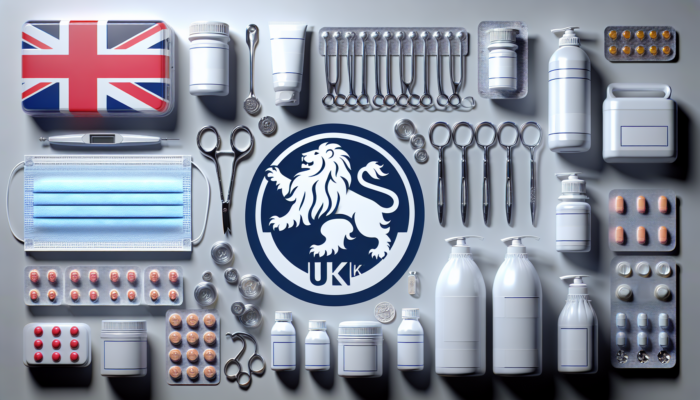Hearing Loss: A Global Concern That Demands Attention

Enhancing Communication for Individuals with Hearing Loss
Overcoming Daily Interaction Challenges Due to Hearing Loss

Effective communication serves as the foundation for all human interactions. When individuals experience hearing loss, their ability to engage in daily conversations significantly diminishes. This can lead to frequent misunderstandings and a profound sense of social isolation. A seemingly simple exchange with a friend can morph into a frustrating ordeal, where misinterpretations can spark unintended conflicts. Globally, millions of individuals grapple with these challenges, making the issue of hearing loss an urgent concern for society. Whether in the bustling streets of Tokyo or in remote villages nestled in the Andes, the necessity for clear communication remains a critical priority. In multicultural settings, the subtleties of language become even more pronounced when one party struggles to hear, potentially resulting in disconnects that alienate individuals from their communities and hinder social cohesion.
Furthermore, the surge in digital communication tools, like video calls and instant messaging, has not completely filled the void for those with hearing impairments. While these platforms offer alternative means of communication, they often lack the personal touch and emotional nuances that face-to-face interactions provide, which are essential for effective emotional expression. As a global community, we must take proactive steps to improve communication accessibility, ensuring those with hearing loss can navigate their social interactions more successfully and inclusively.
Understanding the Impact of Hearing Loss on Relationships
Hearing loss can place significant strain on both personal and professional relationships, creating challenges that can be difficult to overcome. Within families, the inability to communicate effectively can lead to frustration and feelings of emotional isolation, erecting barriers that are not easily dismantled. Consider a family gathering where laughter and open conversation are vital; if one member struggles to hear, they may withdraw from the interaction, leading to emotional distance. This ripple effect extends beyond family dynamics into professional settings, where collaboration relies heavily on clear communication.
In multinational corporations, individuals with hearing loss often find it challenging to participate fully in meetings, which can hinder their career advancement opportunities. The risks of miscommunication increase, leading to misunderstandings that could adversely affect project outcomes. Therefore, creating an inclusive environment where everyone feels valued and included is essential. Employers should be encouraged to adopt inclusive practices, such as offering sign language interpreters or utilizing assistive listening devices. Raising awareness about the implications of hearing loss on relationships is crucial for fostering supportive environments, both at home and in the workplace, ultimately promoting greater understanding and inclusivity.
Identifying Barriers to Effective Communication for the Hearing Impaired
Individuals facing hearing loss frequently encounter significant barriers that hinder their ability to engage fully in both social and work environments. In numerous settings, the absence of appropriate accommodations can heighten feelings of exclusion. For example, public venues that fail to provide assistive listening devices or real-time captioning severely restrict the participation of those with hearing impairments. This lack of accessibility not only restricts their access to information but also diminishes their sense of belonging within the community, which is vital for mental well-being.
Additionally, the stigma surrounding hearing loss can complicate communication further. Many individuals may feel embarrassed about their hearing difficulties, resulting in avoidance of situations where they may struggle to hear or be understood. Different cultures approach hearing loss with varying degrees of acceptance and support, influencing how individuals cope with their challenges. To combat these issues, public awareness campaigns that emphasize the importance of inclusivity and understanding are necessary. By cultivating environments that embrace diverse communication needs, society can empower individuals with hearing loss, enabling them to thrive in all aspects of life.
The Economic Impact of Untreated Hearing Loss

Understanding the Financial Burden of Untreated Hearing Loss
The economic ramifications of untreated hearing loss are staggering, affecting both individuals and society as a whole. Those who do not seek treatment for their hearing impairments may face escalating healthcare costs due to associated health complications that arise from neglect. For instance, untreated hearing loss can significantly increase the risk of falls among older adults, which may lead to costly medical interventions and prolonged recovery periods. Research indicates that the cumulative economic cost of untreated hearing loss can reach billions of dollars annually, underscoring the urgent need for proactive measures and interventions.
Beyond healthcare expenses, untreated hearing loss can greatly diminish productivity within the workforce. Employees with hearing impairments may find it challenging to perform to their fullest potential, leading to decreased productivity levels and increased absenteeism. Companies across the globe face the dual challenge of maintaining a competitive edge while accommodating employees with diverse needs. Addressing hearing loss not only benefits individuals but also promotes a more inclusive workforce, ultimately enhancing overall organizational performance and contributing to economic stability.
Exploring the Impact of Hearing Loss on Workforce Productivity
The productivity of employees with hearing loss is frequently compromised, with evidence indicating that these individuals may experience diminished efficiency and higher rates of absenteeism compared to their hearing counterparts. In fast-paced work environments, effective communication is pivotal for successful teamwork and collaboration. An employee who struggles to hear instructions may miss critical information, which can negatively impact the overall output and effectiveness of the team.
Moreover, instances of miscommunication can lead to errors, further diminishing productivity metrics. Organizations that invest in inclusive practices, such as specialized training and the implementation of communication technologies, are more likely to retain talent and boost workplace morale. For instance, companies that conduct training sessions on effective communication strategies can foster a culture of understanding and support. This approach not only enhances job satisfaction but also paves the way for increased productivity levels within the workforce.
Examining the Societal Economic Burden of Hearing Loss
The societal costs associated with hearing loss extend far beyond individual health expenses, encompassing a broad spectrum of economic impacts. Direct medical expenses related to the treatment of hearing loss can impose significant strain on healthcare systems, particularly in low-income regions where access to care is limited. Furthermore, the indirect costs, such as lost productivity and diminished quality of life, contribute substantially to the economic burden on society as a whole.
On a global scale, the economic consequences of hearing loss can be observed across various sectors, including healthcare, education, and employment. A society that neglects the needs of individuals with hearing impairments risks perpetuating cycles of poverty and marginalization. To effectively address these challenges, it is imperative for policymakers and community leaders to prioritize investments in hearing health initiatives. By doing so, they can alleviate the economic burden associated with untreated hearing loss while fostering a more inclusive and equitable society for all.
Exploring Health and Well-being Implications
Addressing Mental Health Challenges Linked to Hearing Loss
Hearing loss has a profound connection to mental health challenges, with substantial evidence suggesting that individuals with hearing impairments face a heightened risk of experiencing depression and anxiety. The ongoing struggle to communicate effectively can foster feelings of frustration, helplessness, and social withdrawal. For individuals living within diverse communities worldwide, the pressures of maintaining social relationships while managing hearing loss can further exacerbate these mental health issues, highlighting the urgent need for supportive resources.
In certain cultures, the stigma surrounding mental health issues can deter individuals from seeking the help they require, complicating their situation even further. It is crucial to acknowledge the mental health implications associated with hearing loss and to provide accessible resources for those affected. Community outreach programs that promote mental health awareness and support services can empower individuals to seek assistance and connect with others who are facing similar challenges, thereby fostering a sense of community and belonging.
Understanding Cognitive Decline and the Risk of Dementia
Recent studies have established a correlation between hearing loss and accelerated cognitive decline, including an increased risk of developing dementia. The cognitive burden that arises from straining to hear and comprehend speech can lead to mental fatigue, ultimately affecting overall brain health. As populations age globally, the intersection of hearing loss and cognitive health emerges as an urgent public health concern that demands attention and action.
Recognizing these risks is essential for developing effective preventative strategies. Community programs that emphasize hearing health awareness and early intervention can significantly mitigate cognitive decline in at-risk populations. Additionally, healthcare and education professionals should receive training to identify early signs of hearing loss, ensuring timely referrals for assessment and intervention, thus promoting better health outcomes for individuals affected by hearing loss.
Addressing Quality of Life Concerns for Individuals with Hearing Impairments
The overall quality of life for individuals with hearing loss can be significantly impacted, influencing their well-being and daily functioning. Accessibility challenges in social, educational, and occupational settings often lead to feelings of isolation and frustration. For instance, individuals may choose to avoid social gatherings or public events due to the fear of misinterpreting conversations, perpetuating their sense of disconnection from others.
Globally, there exists a pressing need to enhance accessibility and inclusivity for individuals with hearing impairments. Community initiatives that offer resources aimed at facilitating communication, such as workshops on effective interaction techniques, can greatly improve the quality of life for those affected. By fostering environments where individuals feel valued and included, society can help mitigate the adverse effects of hearing loss on overall well-being, ultimately promoting healthier communities.
Mitigating Social Isolation Risks Associated with Hearing Loss
The risk of social isolation represents a significant concern for individuals with hearing impairments, as communication difficulties often lead to withdrawal from social interactions. This phenomenon is prevalent across various cultures globally, where community and family connections are essential for emotional well-being. As individuals withdraw, they may experience loneliness, which can have detrimental effects on their health and overall quality of life.
Support networks are crucial in combating social isolation among those with hearing loss. Initiatives that promote awareness, understanding, and acceptance within communities can encourage individuals to engage socially, fostering connections and reducing feelings of loneliness. Furthermore, peer support groups can provide safe spaces for individuals to share experiences and coping strategies, ultimately nurturing a sense of belonging and connection within their communities.
Addressing Educational Challenges Faced by Students with Hearing Impairments
Assessing the Impact of Hearing Loss on Learning and Development
Children with hearing loss often encounter considerable challenges in acquiring language and educational skills, which are vital for their overall development. The early years are critical for cognitive growth, and any delay in language acquisition can have lasting implications on a child’s academic journey. Globally, disparities in access to educational resources further complicate this issue, with children from underprivileged backgrounds facing even greater hurdles in their learning experiences.
Implementing early intervention programs that prioritize language development can significantly enhance learning outcomes for children with hearing impairments. By providing tailored educational experiences that meet their unique needs, educators can empower these children to thrive academically. This proactive approach ensures that they are not left behind and have equal opportunities to succeed in their educational pursuits, fostering a more equitable learning environment.
Ensuring Accessibility in Educational Settings for Hearing-Impaired Students
Guaranteeing equal access to education for students with hearing loss is of utmost importance. Educational systems globally must adopt inclusive practices that accommodate the diverse needs of all learners. This includes providing essential assistive technologies, such as hearing aids and captioning services, which can greatly enhance the learning experience for students with hearing impairments.
Moreover, teacher training programs must integrate strategies for effectively supporting students with hearing loss. By equipping educators with the tools and knowledge necessary to foster inclusive classrooms, schools can create nurturing environments that promote learning and development for all students, regardless of their hearing abilities. This holistic approach is vital for ensuring that every child has the opportunity to reach their full potential.
Long-term Educational Outcomes for Hearing-Impaired Students
Hearing loss can profoundly impact academic performance and future educational opportunities for students. The inability to fully engage in classroom discussions and activities can lead to lower grades and diminished motivation. As these students advance through their education, the cumulative effect of hearing loss can severely limit their aspirations and potential, leading to a cycle of disadvantage.
To effectively combat these challenges, it is critical to implement supportive measures that enhance educational outcomes. Schools should prioritize the development of individualized support plans that cater to the specific needs of students with hearing impairments. This proactive approach can help alleviate the long-term impacts of hearing loss on educational achievement, ensuring that all students have equitable opportunities to succeed and thrive in their academic journeys.
Prioritizing Teacher Training and Support for Hearing-Impaired Students
Effective training for educators is essential to meet the unique needs of students with hearing loss and improve overall educational outcomes. Teachers must be equipped with strategies to foster inclusive classrooms where all students can participate meaningfully. This includes gaining an understanding of the complexities surrounding hearing loss and developing tailored teaching methodologies that cater to diverse learning styles.
Professional development opportunities should focus on equipping educators with the necessary tools to create supportive learning environments. By fostering collaboration between teachers, special education professionals, and support staff, schools can ensure that students with hearing impairments receive the attention and resources necessary for academic success. This collective effort is vital for promoting an inclusive educational landscape that benefits all students.
Leveraging Assistive Technology to Support Learning
The integration of hearing aids, cochlear implants, and other assistive technologies can significantly enhance the learning experiences of students with hearing loss. These devices improve access to auditory information, allowing students to fully participate in classroom activities and discussions. Moreover, global advancements in technology have made these tools more effective and accessible than ever before, bridging the gap for students with hearing impairments.
Educators play a crucial role in integrating assistive technology into the learning environment. Providing training on how to effectively utilize these tools can empower both students and teachers to maximize the benefits of technology in education. By embracing innovation and fostering supportive learning environments, educational institutions can help close the gap for students with hearing impairments, ultimately enhancing their educational experiences and outcomes.
Focusing on Prevention and Early Intervention Strategies
Recognizing the Importance of Early Detection of Hearing Loss
The early identification of hearing loss is vital for effective management and improved outcomes. The sooner a hearing impairment is detected, the more options individuals have for treatment and intervention. Globally, public health initiatives that advocate for routine hearing screenings can facilitate early detection, allowing for timely interventions that can significantly enhance the quality of life for individuals dealing with hearing loss.
Moreover, awareness campaigns can educate parents and caregivers on the signs of hearing loss in children, encouraging prompt action to seek help. By emphasizing the critical importance of early detection, communities can work collaboratively to reduce the long-term impacts of hearing loss on individuals and society as a whole, fostering healthier populations and more inclusive environments.
Implementing Effective Strategies for Hearing Loss Prevention
Public health initiatives are crucial in reducing the incidence of preventable hearing loss. Strategies may include promoting the use of hearing protection in noisy environments, educating individuals about the risks associated with ototoxic medications, and advocating for regular hearing assessments. Globally, collaboration between healthcare providers, educators, and community organizations is essential for implementing effective prevention programs that protect hearing health.
Furthermore, raising awareness about the causes and risk factors of hearing loss can empower individuals to take proactive measures to safeguard their hearing. Communities that prioritize hearing health initiatives can ultimately decrease the prevalence of hearing loss while improving overall public health outcomes, leading to healthier societies.
Ensuring Access to Intervention Services for Individuals with Hearing Loss
Timely access to intervention services, such as hearing aids and audiological support, can profoundly enhance the quality of life for individuals with hearing loss. However, barriers to access, including financial constraints and lack of availability, can prevent many individuals from receiving the necessary care. It is crucial for governments and organizations globally to advocate for affordable and accessible hearing healthcare services, ensuring that everyone can benefit from timely interventions.
Community outreach programs can also play a pivotal role in connecting individuals with necessary resources and support. By establishing networks that facilitate access to intervention services, society can empower individuals with hearing loss to thrive in their personal and professional lives, fostering a more inclusive and equitable community.
The Role of Education and Awareness in Hearing Health
Educating the public about hearing health is fundamental to enhancing early detection and promoting preventive measures. Global campaigns that raise awareness about the risks and consequences associated with hearing loss can foster a culture of understanding and support. By providing essential resources and information, communities can empower individuals to seek help and take proactive steps to protect their hearing health.
Furthermore, collaboration between healthcare professionals and educators can ensure that accurate information about hearing health is effectively disseminated. By prioritizing education and awareness, societies can reduce the overall impact of hearing loss, ultimately promoting healthier communities and enhancing the quality of life for individuals affected by hearing impairments.
Exploring Technological Advances in Hearing Health
Revolutionary Innovations in Hearing Aids
Advancements in technology have led to the development of more effective and user-friendly hearing aids. Modern hearing aids are now smaller, more discreet, and equipped with advanced features that enhance sound quality and clarity. These technological innovations have made it easier for individuals with hearing impairments to communicate effectively, regardless of their environment or situation.
However, globally, access to these innovative devices remains a challenge in certain regions. Advocacy efforts are essential to ensure that individuals, particularly those in underserved communities, can benefit from the latest hearing aid technologies. By raising awareness about available options and promoting access, society can empower individuals with hearing loss to lead fulfilling lives and maintain meaningful connections with others.
Utilizing Assistive Listening Devices to Enhance Communication
Assistive listening devices (ALDs) serve as invaluable tools for individuals with hearing loss, enhancing communication and accessibility in various settings. These devices can amplify sound, improve clarity, and help individuals engage in conversations more effectively. Globally, the availability and integration of ALDs in public spaces, such as theaters and classrooms, can significantly improve the experiences of individuals with hearing impairments.
Moreover, training programs that educate individuals on how to effectively use ALDs can maximize their benefits. By fostering environments where assistive technologies are readily available and understood, communities can enhance inclusivity for individuals with hearing loss, ultimately improving their ability to communicate and connect with others.
Envisioning the Future of Hearing Technology
Ongoing research and development promise even more advanced solutions for hearing loss in the future. Innovations in sound processing, wireless connectivity, and artificial intelligence are paving the way for next-generation hearing devices that offer personalized experiences tailored to individual needs. As technology continues to evolve, the potential for improving the lives of those with hearing impairments grows exponentially.
Global collaborations between researchers, healthcare providers, and technology companies are essential in driving these advancements forward. By working together, stakeholders can ensure that breakthroughs in hearing technology are accessible to individuals worldwide, ultimately enhancing communication and improving the quality of life for those affected by hearing loss.
Advancements in Cochlear Implant Technology
Recent advancements in cochlear implant technology have dramatically improved sound quality and speech understanding for users with severe hearing loss. These devices bypass damaged hair cells in the cochlea, directly stimulating the auditory nerve and providing access to sounds that might otherwise be missed. For individuals with profound hearing loss, cochlear implants can be transformative, restoring their ability to engage meaningfully with the world around them.
Nevertheless, the accessibility of cochlear implants remains a challenge in many regions globally. Advocacy for increased funding, education, and support for individuals seeking cochlear implants is crucial to ensure equitable access to this life-changing technology. By raising awareness about the benefits and availability of cochlear implants, communities can empower individuals with severe hearing loss to regain their independence and connection with others.
Smartphone Integration Enhancing Hearing Device Usability
The integration of hearing devices with smartphones has revolutionized the user experience for individuals with hearing loss. This advanced technology allows for personalized settings and enhanced connectivity, enabling users to control their hearing aids directly from their smartphones. Features such as audio streaming, customizable sound profiles, and remote support have made hearing aids more user-friendly and effective, improving overall user satisfaction.
As smartphone technology continues to evolve, the potential for further integration and innovation is immense. By promoting awareness of these advancements, communities can empower individuals with hearing loss to take advantage of the latest technologies, enhancing their communication abilities and overall quality of life significantly.
Fostering Advocacy and Awareness for Hearing Health
Understanding the Role of Advocacy Groups in Supporting Individuals with Hearing Loss
Advocacy organizations play a crucial role in promoting the rights and needs of individuals with hearing loss. These groups work diligently to raise awareness about the challenges faced by those with hearing impairments and advocate for policies that support accessibility and inclusion. On a global scale, advocacy efforts can lead to significant changes in legislation and community attitudes, fostering a more equitable society for all individuals.
By collaborating with healthcare providers, educators, and policymakers, advocacy groups can create comprehensive frameworks that address the multifaceted needs of individuals with hearing loss. Their efforts are essential in ensuring that these individuals receive the support and resources necessary to thrive within their communities, ultimately improving their quality of life and fostering social inclusivity.
Strategies for Raising Public Awareness on Hearing Loss
Increasing public awareness about hearing loss is pivotal in fostering greater understanding and support for individuals affected by this condition. Global campaigns that highlight the prevalence of hearing loss and its impact on individuals and families can foster empathy and encourage proactive measures within communities. By sharing personal stories and experiences, advocates can humanize the issue and inspire action toward supporting those affected.
Educational programs that focus on hearing health can empower individuals to seek help and support for their hearing needs. By prioritizing awareness and understanding, society can create inclusive environments that celebrate diversity and foster connections among individuals, ultimately enhancing community solidarity and support.
Advocacy for Policy and Legislative Changes to Support Hearing Health
Effective policies and legislative measures are essential for addressing the needs of individuals with hearing loss. Globally, advocating for laws that promote accessibility in educational settings, public transportation, and workplaces is crucial for fostering inclusivity and equity. Policymakers must recognize the importance of hearing health and invest in initiatives that support individuals with hearing impairments, thereby promoting a more just society.
Collaborative efforts between advocacy groups, healthcare professionals, and government agencies can lead to comprehensive frameworks that ensure equal opportunities for individuals with hearing loss. By prioritizing policy changes and fostering a culture of understanding, society can create a more equitable and inclusive environment for all individuals, irrespective of their hearing abilities.
Frequently Asked Questions About Hearing Loss
What are the primary causes of hearing loss?
Hearing loss can result from a range of factors, including age-related deterioration, exposure to loud noise, genetic predispositions, ear infections, and the effects of certain medications. Understanding these causes is essential for implementing prevention strategies and promoting early intervention.
How can I effectively prevent hearing loss?
Preventing hearing loss involves protecting your ears from exposure to loud noises, avoiding ototoxic medications when possible, and undergoing regular hearing check-ups to detect any changes early on. Taking these proactive measures can significantly reduce the risk of developing hearing impairments.
What are some common signs of hearing loss?
Signs of hearing loss may include difficulty understanding conversations, needing to increase the volume on devices, frequently asking others to repeat themselves, and withdrawing from social activities due to communication challenges. Recognizing these signs early can facilitate timely intervention.
Are there resources available to assist individuals with hearing loss?
Yes, numerous resources exist, including support groups, educational materials, and information about assistive devices. Organizations specializing in hearing health can provide essential guidance and support for individuals seeking assistance.
How does hearing loss impact mental health?
Hearing loss can lead to heightened feelings of isolation, anxiety, and depression. The struggle to communicate effectively may contribute to emotional distress, underscoring the importance of mental health support and resources for those affected by hearing impairments.
What role do assistive technologies play in managing hearing loss?
Assistive technologies, such as hearing aids and cochlear implants, significantly enhance the ability to hear and communicate. These devices can improve the quality of life and facilitate social interactions for individuals with hearing impairments, allowing them to engage more fully in their communities.
What steps should I take if I suspect hearing loss in a child?
If you suspect hearing loss in a child, it is crucial to consult a healthcare professional for a comprehensive evaluation. Early detection and intervention are vital for supporting their language, learning, and overall development.
How do advocacy groups support individuals with hearing loss?
Advocacy groups work to raise awareness, promote accessibility, and advocate for policies that support individuals with hearing loss. They provide valuable resources and foster community connections to empower those affected, ultimately improving their quality of life.
What is the economic impact of untreated hearing loss?
Untreated hearing loss can result in significant economic burdens, including increased healthcare costs and reduced workforce productivity. Addressing hearing loss can lead to improved outcomes for individuals and society, fostering greater economic stability.
How can communities promote awareness about hearing loss?
Communities can promote awareness through educational campaigns, workshops, and events that highlight the importance of hearing health. Engaging local organizations and stakeholders can foster a culture of support and understanding, ultimately benefiting all community members.
Explore our journey on X!
The post Hearing Loss: A Global Concern That Demands Attention appeared first on The Microsuction Ear Wax Removal Network.




































































